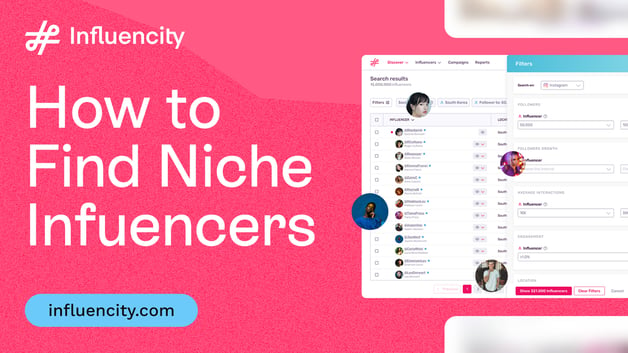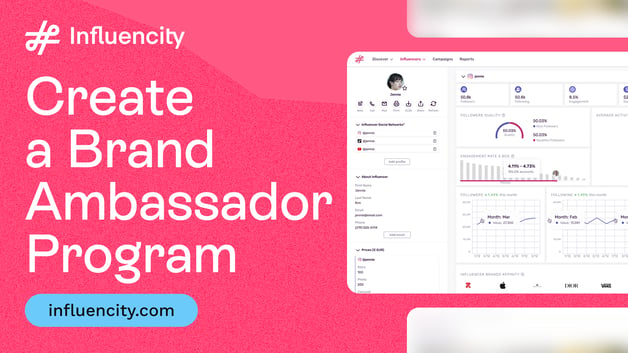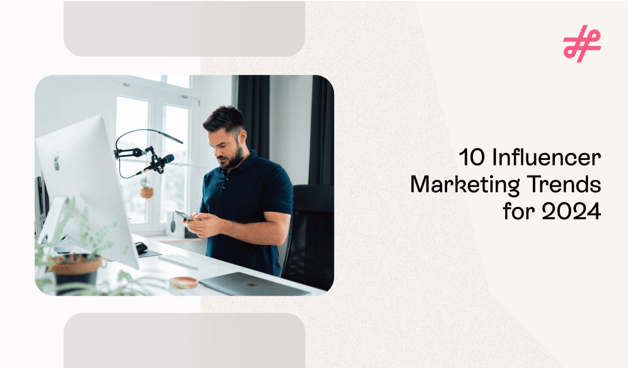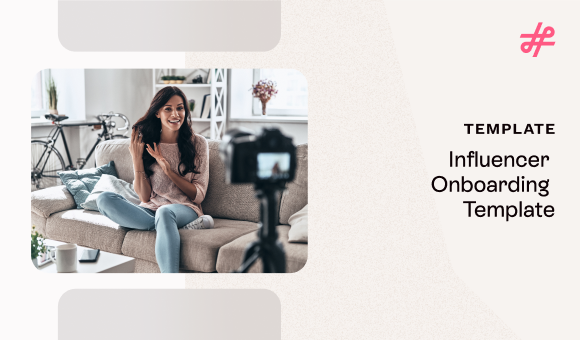Influencer Marketing
Before You Hire a Creator, Define Your ICP: The Influencer Agency Guide to Ideal Customer Profiles
Influencer Marketing
As a self-proclaimed foodie, I’m more likely to take cooking advice or product suggestions from food-related accounts rather than from a random lifestyle influencer, even if they have millions of followers. In spite of the hype they’ve generated throughout social media, I’ll only likely try out their suggestion if a food account I trust vouches for it.
Similarly, influencer campaigns may be unable to generate a sustainable impact when reach alone is the biggest factor you consider when choosing influencers.

That’s where an ideal customer profile (ICP) comes in, enabling agencies and brands alike to get more clarity on which types of influencers will best resonate with the audience they want to reach.
In this post, I break down what goes into an ICP and how agencies can use it to vet and brief creators for their client campaigns.
Why Your Influencer Campaign is Only as Good as Your ICP
Multiple influencer campaigns across different industries share a common pain point:
“We partnered with a creator who had high reach but no real connection to our actual customer.”
That’s the problem when reach is the main criterion for choosing influencers. But even if those influencers can get your brand and product in front of hundreds of thousands of people, there’s no guarantee that those audiences will be interested in your offer.
Meanwhile, an ICP maps out the traits of your target audience. It defines characteristics like the general age group, values, interests, and behaviors of the people you want to reach.
Compared to buyer personas, ICP is a more generic outline of your ideal customer segment or account type. Buyer personas offer a more in-depth description of individual buyers with their goals, challenges, motivations, and specific buying behavior.
For example, an ICP for a skincare brand may describe a segment of sustainable skincare buyers. Within this ICP, you may have different buyer personas like 1) the budget buyer, 2) the premium skincare enthusiast, 3) the sensitive skin user, and 4) the sustainability advocate.
But even without these deeper persona-specific breakdowns, an ICP alone gives you a lot more clarity into the types of people you want to reach. This can then guide your influencer selection process. Instead of simply relying on data or vibe checks, you can look at audience fit to select influencers with a real connection to your audience.
For brands like Edible Beauty, their ICP comprises individuals who care about natural and toxin-free skincare products. So their partnership with influencers like Sarah (@lowtoxinrabbit) makes perfect sense, seeing that she creates content about her low-tox life. People who engage with her content are concerned about eliminating toxins from their lives, which means that they’ll be very much interested in the brand’s toxin-free skincare.
ICP Breakdown: What Goes Into It
Creating an effective ICP involves knowing what goes into it. Let’s go through some of the key details to include in your ideal customer profile.
Demographics
First, you start with the baseline info about your customers. This mainly includes demographic data. Are you targeting customers from a specific area? Do they fit within a certain age group? Do they identify by a specific gender?

For example, your ICP may focus on women aged 25-40 and living in California. This could get narrower, such as Gen Z women living in the San Francisco Bay Area. Or you could be targeting a broader region, such as the whole of Australia.
Psychographics
The psychographics data is what gives you a better understanding of your customers and what influences their buying decisions. It can include details like their interests, hobbies, lifestyle, values, pain points, and motivations.

For example, your ICP may focus on customers who care about their environmental impact, which influences their buying decisions. This means they’ll be looking at products made with sustainability in mind. Think: natural, cruelty-free ingredients and recycled packaging.
Behaviors
Now you’ll also want to enhance the profile with behavioral data. This includes information about how your audience behaves and how they interact with brands, such as buying history, product use, loyalty, content preferences, platform choice, preferred buying channel, etc.
For example, your ICP may focus on customers who buy online and mainly use TikTok to find skincare tips and buying inspiration.
Triggers
Finally, your profile should include the triggers of your customers. What compels them to consider a new product? Triggers could include events like back-to-school shopping, skincare resets, or TikTok recommendations.
Pro Tip: Use surveys, CRM data, TikTok comments, and Reddit threads to collect more information that could strengthen your ICP. Customer reviews and online discussions related to your brand can tell you a lot about how people shop and why they choose to buy certain products. Remember that the data is there; it’s just not always in a deck.
Brand Example: BUXOM Cosmetics
BUXOM Cosmetics is known for their expertise in lip plumping. The brand didn’t become iconic by appealing to everyone. Their ICP is narrow: Millennial women who use makeup to become their boldest selves and use social media to discover trends.
The brand is all about being big, bold, and sexy – and that’s exactly what you can see even when it comes to their creator picks. In addition to having reach, the brand’s influencers perfectly match the lifestyle, aesthetic, and tone of their target audience. Take, for example, their #BandOfBabes campaign featuring Bella Thorne.
The campaign features Bella with a “band of babes” and she’s seen wearing red hot lips to match her red leather outfit. With the actress being known for her bold aesthetic and confident personality, the partnership made perfect sense.
Even as the brand starts introducing more neutral product lines to fit with the latest beauty trends, their ICP remains the same. They keep targeting customers who are confident and bold. And that’s exactly why their creator picks also feature influencers who give off the same main character energy as seen in their ICP.
Across different makeup aesthetics, BUXOM features influencers wearing big, bold, and sexy lips to match the brand’s ICP.
The takeaway is to obsessively narrow your ICP until it feels exclusive. That’s how you build cult brands. Without this, BUXOM wouldn’t be known today as the go-to brand for lip plumping.
ICP-Based Influencer Vetting: Red Flags and Green Lights
Once you have your ideal customer profile in place, you can use it to guide various aspects of your influencer selection and vetting process. It will provide you with a clear idea of what to look for in an influencer and what to avoid so you can find the right audience match.
Let me share some of the red flags and green flags to consider based on your ICP.
Green Lights
First, let’s start with the good stuff. Here are some of the factors that indicate an influencer is a good fit based on your ICP.
Audience Data Closely Matches Your ICP
Your ICP clearly lays out some of the key details about the people you want to reach. It defines the basics like their age group, gender, and location, as well as their interests, lifestyle, values, hobbies, and buying behavior. When most of these details match the influencer’s audience data, it’s an early indicator that they could be a good fit for your brand.

Note that you may not be able to find a 100% match. But even a close match indicates a good audience alignment, making it vital for campaign success.
Platforms like Influencity let you perform an influencer audience analysis, so you can get a detailed demographic breakdown of their followers. This helps you visualize the age groups, gender, top countries, top cities, languages, and even ethnicities of an influencer’s audience.

Additionally, you can use the audience interest filter to search for influencers whose audiences show interest in specific topics. This makes it easier to narrow your search according to your ICP.

Previous Content Resonates with Your ICP
Next, you’ll want to look at the influencer’s existing content to see whether it will resonate with your buyers. This goes beyond niche alone and digs deeper into the more unique characteristics of your ICP. In other words, their content should speak to the lifestyle or needs highlighted in your ICP.
For example, not every fashion influencer will create content that resonates with buyers looking to make sustainable buying choices. But someone who posts about thrifting and repurposing clothing items or shopping from sustainable brands will likely speak to the ICP.
That’s why brands like Patagonia don’t just partner with creators who love the outdoors, even though they sell outdoor recreation clothing. As a brand that’s big on saving the planet, they also focus on partnerships with influencers who are committed to the same purpose.
Uses the Same Tone/Language as Your Buyers
Another factor to consider is the tone and language the creator uses. Does it match the way your buyers typically talk?
Look beyond the use of trendy soundbites and go deeper into the way they actually interact with their audience. Are they friendly and approachable? Do they enjoy sarcasm or self-deprecating jokes? Or are they more serious and inspiring?
For brands like Clove, their ICP mainly consists of healthcare professionals between the ages of 25 and 55. In spite of the professional targeting, the brand’s buyers are likely to be tech-savvy and appreciate online shopping experiences. This means they’re active on social media and use a more casual, internet-friendly language.
So they’ve partnered with micro-influencers like Aaron Rivera, an industry practitioner with an active social media presence. This creator speaks the same language as the brand’s target audience.
Red Flags
On the flip side, your ICP will also reveal a lot of red flags during the influencer vetting process. Let’s break down some of the biggest ones.
Aesthetically Aligned but Low Audience Match
It’s easy to go by an influencer’s aesthetics when assessing them for brand match. At first glance, their Feed instantly attracts you because it’s so aligned with your brand’s visual identity.
Think: clean and minimalist for a brand like Apple, or fun and playful for a brand like Flotte.
Yet aesthetics alone doesn’t guarantee the right audience fit. For instance, most of their followers may be located somewhere different from your target region. Or they may not share the interests outlined in your ICP. If the Feed looks great but the audience match is low when compared to your ICP, it’s time to look elsewhere.
Inflated Engagement from Giveaway Followers
Engagement rate is one of the first indicators of how well an influencer’s content resonates with their audience. Yet sometimes, the numbers can get distorted. This is common among influencers who participate in engagement pods or buy fake engagements.
But even if the engagement is authentic, it may not always be consistent. There are times an influencer may experience inflated engagement rates when they run giveaway promotions. So most of the engagements will come from giveaway followers. It doesn’t mean that those followers are genuinely interested in the creator’s content or will keep following them once the giveaway period ends.
Use a platform like Influencity to keep track of the influencer’s engagement patterns over time. If you notice higher engagements on specific dates, see if you can attribute it to something like a giveaway campaign. Then track if the engagement drastically drops after this.

Values Clash with Your ICP’s Motivators
Misaligned values are a major red flag because the influencer won’t be able to authentically connect with the audience you want to reach. For instance, budget-conscious buyers won’t be able to relate to luxury-heavy creators. Similarly, if the creator’s constantly posting about wardrobe hauls and partnerships with fast fashion brands, their content won’t resonate with the audience.
Pro Tip: Sync Your ICP with CRM for Long-Term Wins
Although we’re stressing the use of ICP to fuel your influencer campaigns, the two shouldn’t exist separately from your overall marketing efforts. Rather, syncing your ICP data across your sales and CRM platforms as well as your influencer marketing platforms, is essential to create closed-loop marketing.
This involves using data from your sales, CRM, and influencer platforms to refine and enrich your ICP, and then using said data to guide various aspects of your marketing strategy in the long run.

That way, you’re not just targeting audiences at the awareness moment. Instead, your campaign targeting can match the lifecycle stages of different audiences, which will translate to long-term results.
For example, you could use the data on your TikTok viewers to retarget them with personalized emails matching the same ICP profile.
How to Translate ICPs into Creator Briefs
One area where your ICP makes a huge difference is in influencer briefing. It will help you provide a deeper insight into “who” the campaign is really for. So it makes a much bigger difference than simply sharing a moodboard.
Include a paragraph or two describing the key characteristics of the audience you want to reach. Go beyond demographic data and provide details about their values and motivations. Make sure to share the pain points that creators need to touch in their content. For example, the struggle to find acne-safe foundation or the need for low-cost yet sustainable footwear.
Creators will also need some information about the types of content formats that the audience prefers. Do they enjoy GRWMs where the creator shares some “tea”? Are they looking for ingredient callouts to make more informed decisions?
If possible, try to include some example TikTok comments from your target audience just to give them a glimpse of what they will be dealing with. For example, your ICP may consist of people who are sufficiently skincare literate. So they may not hesitate to call out problematic ingredients or incorrect product usage like in the comments below.

-1.png?width=700&height=174&name=White%20%26%20Green%20Modern%20Bar%20Chart%20Graph%20(33)-1.png)
Build an ICP that Translates to Real Results
From your influencer vetting to your creator briefing, your ideal customer profile serves as a guideline to inform your decisions. It helps you narrow down influencers with the right audience match and provide briefs to create content that actually speaks to the audience. Make the most of the tips and ideas I shared above to build an ICP that delivers real results.
Tags:
ICP
Jackie Zote
Jacqueline Zote is a freelance writer and content producer who specializes in putting together in-depth guides and articles on all things related to digital marketing. As a social media native who’s chronically online, she uses her expertise and experiences to tap into the pulse of social media and influencer...



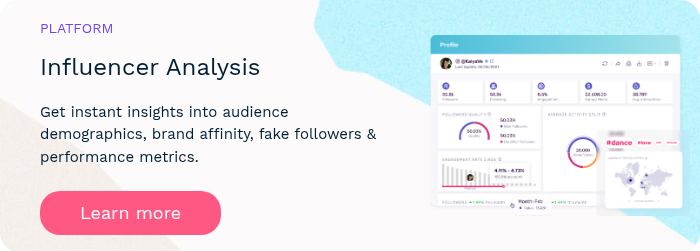
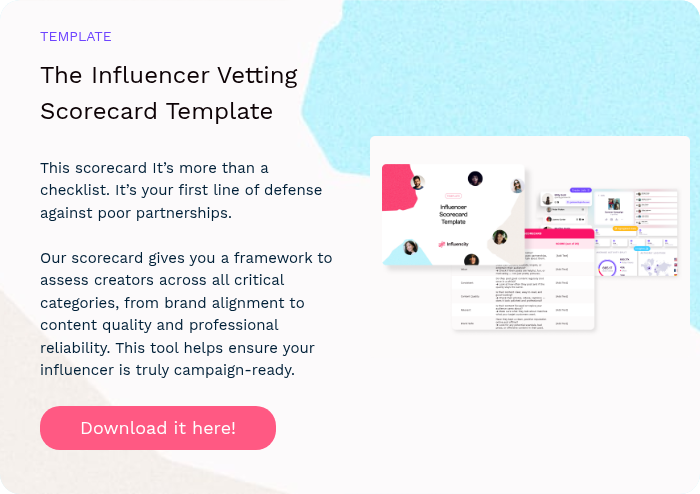

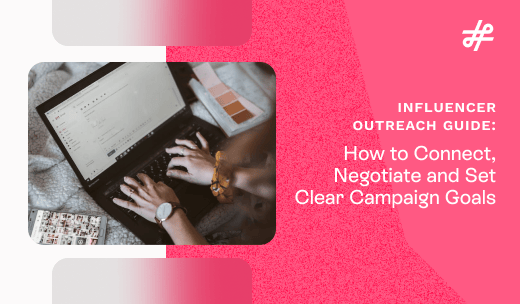




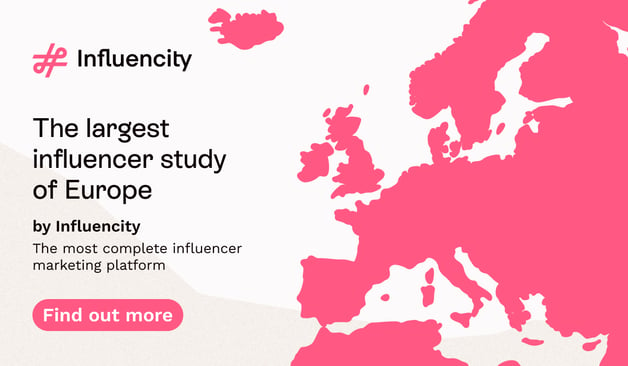

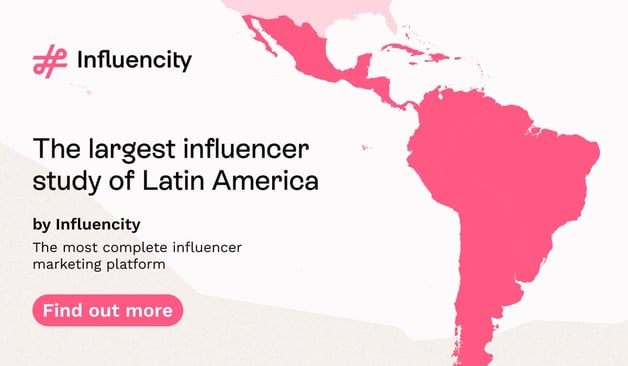


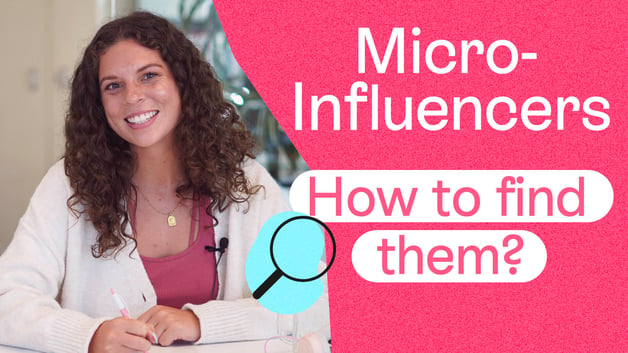


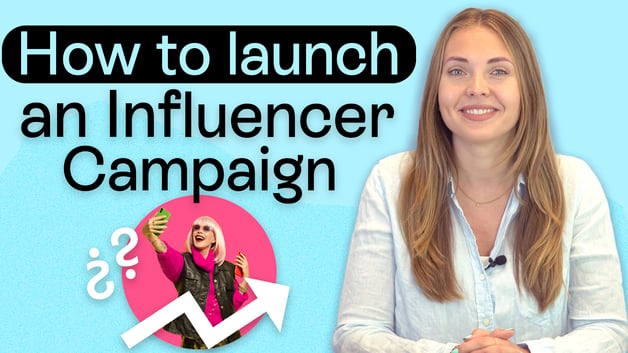

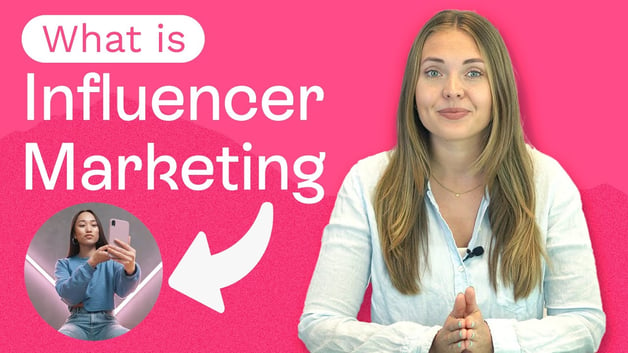

%20and%20How%20Can%20They%20Benefit%20Your%20Brand%20article.jpg?length=628&name=What%20Are%20Key%20Opinion%20Leaders%20(KOL)%20and%20How%20Can%20They%20Benefit%20Your%20Brand%20article.jpg)
